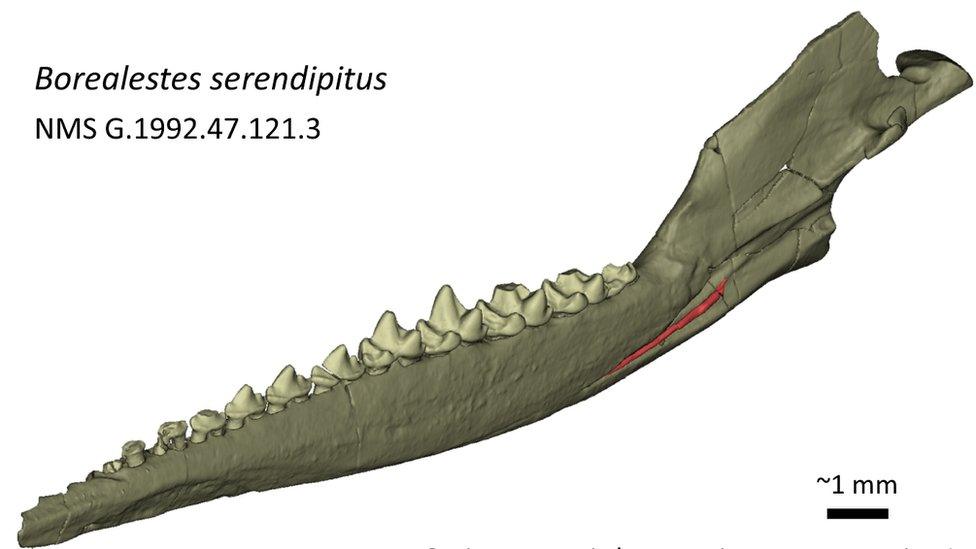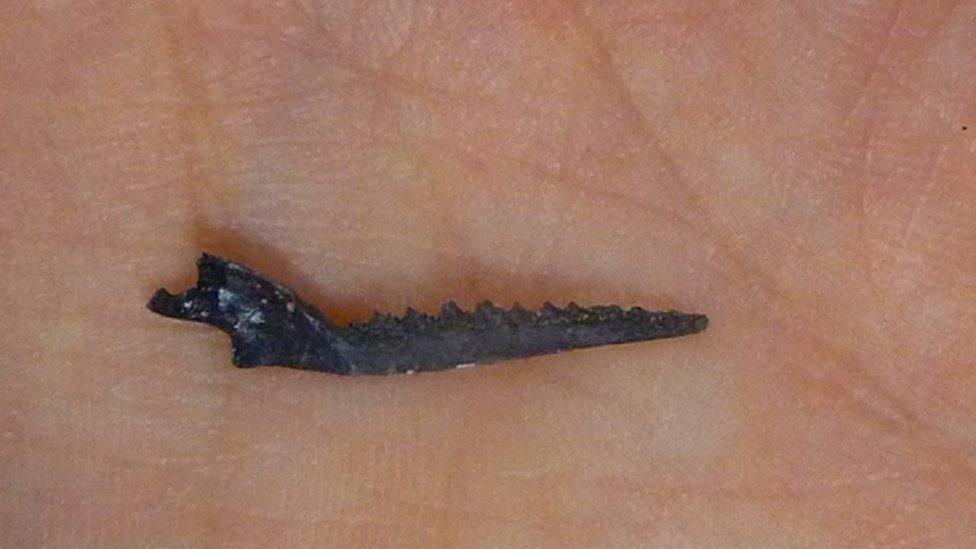New study of Skye's mouse-like Jurassic animal
- Published

A scan has revealed in detail the shape of tiny Jurassic mammal's teeth
Scientists have made the most detailed study yet of a fossil found in Skye of a mouse or shrew-like creature that lived more than 165 million years ago.
The jaw of Borealestes serendipitus was discovered more than 40 years ago, the first time such a find had been made of the animal.
Scottish palaeontologist Elsa Panciroli and her colleagues have now identified in the fossil distinguishing features.
These include the shape of the creature's teeth.
The researchers said these features would help to distinguish the Middle Jurassic's Borealestes from other extinct mammals.

The tiny fossil jaw was found in the south of Skye
The new study published in the Journal of Vertebrate Paleontology, external involved, for the first time, making a detailed electronic scan of the fossil.
Found in the south of Skye, it was the first jaw of Borealestes to be found. Other discoveries of the mammal have been made since then.
Ms Panciroli told BBC Radio Scotland: "Borealestes serendipitus sounds like a bit of a mouthful, but it is actually a well thought out and beautiful name.
"It means the 'northern rogue, that was found by chance'."
She said Skye was famed for its dinosaur fossils and that many people may not be aware of its important prehistoric mammal fossils.